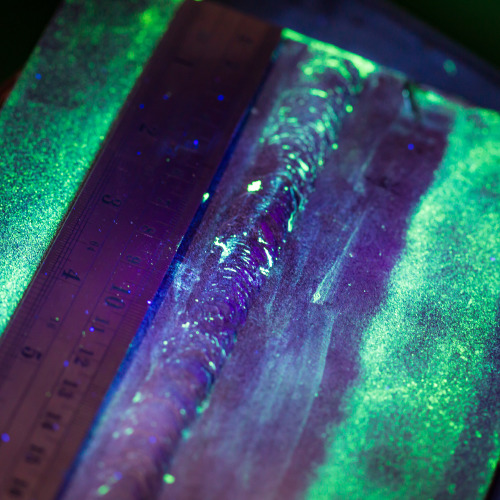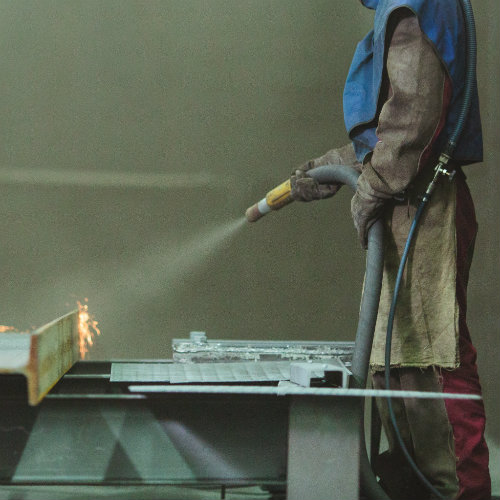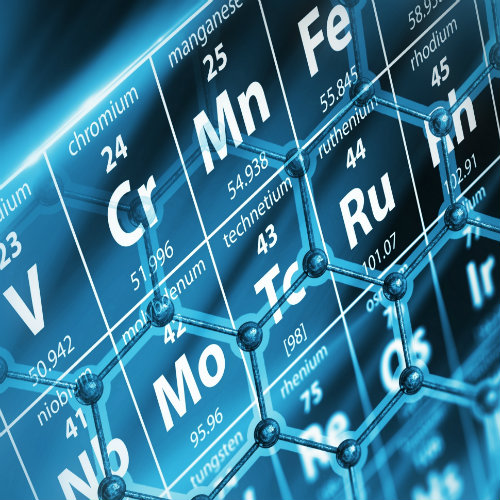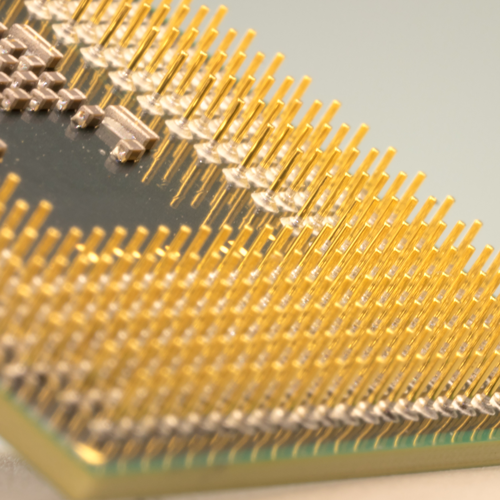Zinc Phosphate Services
In the quest for precision and sustainability in metal finishing, “Zinc Phosphate Services” is a defender against the ravages of time and the environment. As industries evolve and demand greater sophistication in their components, the protective prowess of Zinc Phosphate proves indispensable. It’s more than just a process—it’s the hallmark of quality and assurance; a bar set high by Valence Surface Technologies and surpassed with each successful application.
At Valence Surface Technologies, the dedication to perfection is apparent in every layer of Zinc Phosphate applied to the alloys of aerospace, the steels of defense, and the countless critical components that define the modern world’s machinery. With an unwavering commitment to environmental responsibility and a promise of performance, our Zinc Phosphate services elevate industry standards, turning ordinary metals into extraordinary examples of innovation and durability.
Understanding Zinc Phosphate Coatings
Zinc Phosphate is a conversion coating formulated for steel and aluminum, known for its significant resistance against corrosion and its ability to enhance adhesion. This reputable mix of phosphate salts and phosphoric acid undergoes a transformative chemical reaction, beginning as a crystalline powder and culminating in a robust coating that melds with the metallic base to confer elevated endurance against the elements.
Within the very framework of industries such as dental where it’s used in cements for crowns and bridges, and beyond into the vast horizons of aerospace and defense, Zinc Phosphate is the bedrock of durability and resilience, a testament to the technological edge provided by Valence Surface Technologies.
The Role Of Zinc Phosphate In Corrosion Resistance
In the battle against degradation and decay, Zinc Phosphate emerges as a formidable ally, providing a shield of protection to metals that are integral to our industries and infrastructure. Its usage spans various applications, giving each a longevity that only the finest of chemical processes can achieve.
Barrier Creation
Zinc Phosphate works by creating a formidable barrier layer of crystals on the metal surface. This layer defends the metal from corrosive elements, thus ensuring a longer lifespan and maintaining structural integrity. This conversion coating chemically bonds to the substrate and becomes part of the metal itself, providing an impervious defense against oxidation and other forms of environmental degradation.
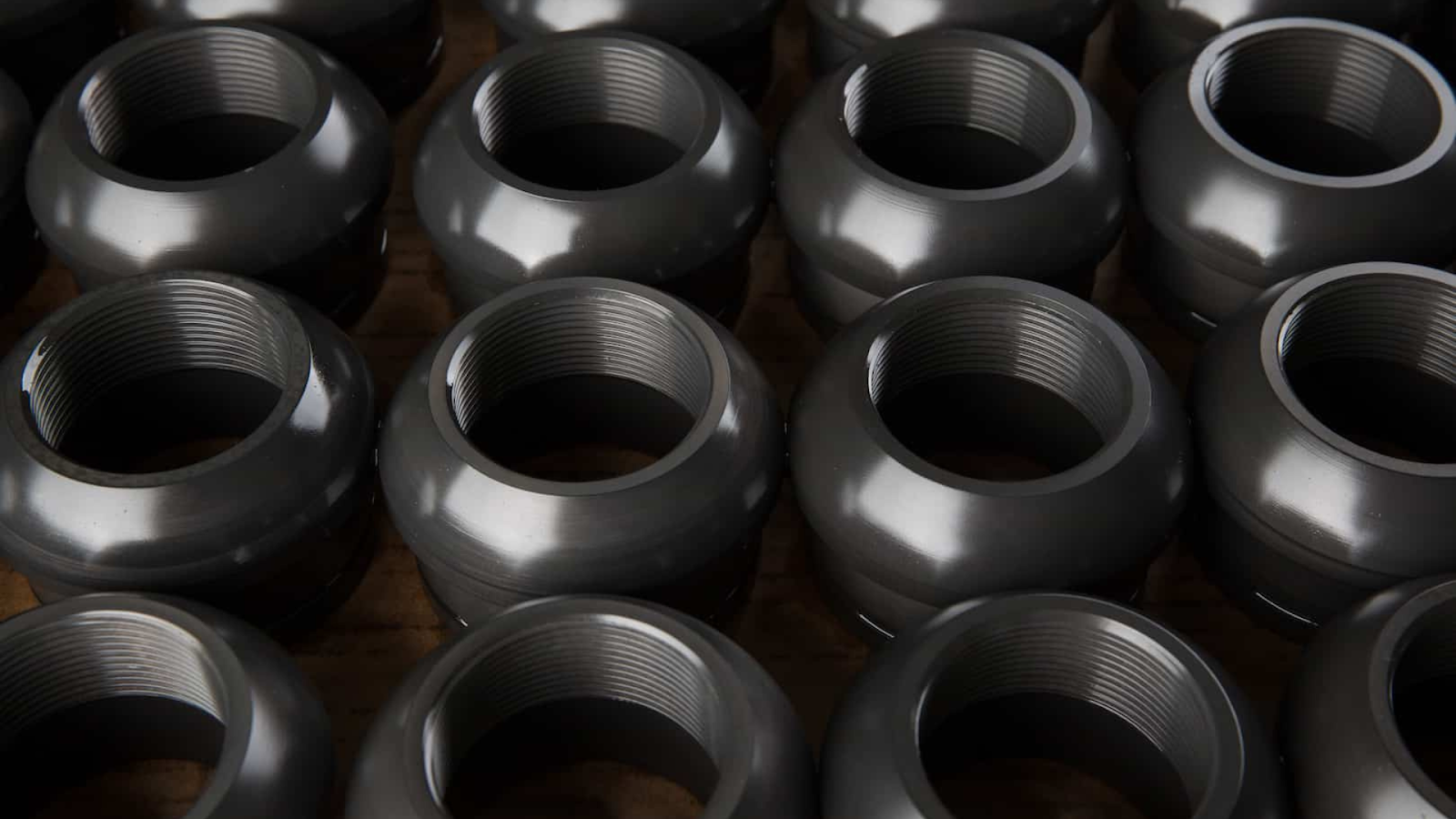
Adhesion Promotion
Beyond its role as a shield, Zinc Phosphate also promotes strong adhesion for subsequent layers of paint or coatings. This ensures not only secured aesthetic appeal but also adds an extra level of protection. The unique crystalline structure of the Zinc Phosphate layer presents an ideal surface for coatings to latch onto, essentially acting as the perfect primer that enhances the adherence and longevity of topcoat applications.
Finer Or Heavier Crystals
The type of Zinc Phosphate layer can be tailored, consisting of either finer or heavier crystalline phosphates. The choice depends on the method of application and the specific protections required for the end-use of the metal. Such versatility allows for targeted applications, where finer crystals might be used for delicate components demanding precision, while heavier crystals are reserved for more rugged uses that require additional toughness.
Insolubility In Water
The resulting Zinc Phosphate coating is insoluble in water, which further enhances its ability to protect metal components in environments where moisture could otherwise precipitate corrosion and rust. This feature is particularly crucial for components that will be used in marine environments or those exposed to high humidity, where the relentless presence of water necessitates robust protective measures.
High-Temperature Resistance
With a melting point of 1,650 degrees Fahrenheit, Zinc Phosphate coatings can withstand high-temperature scenarios, making them ideal for applications that are exposed to significant thermal stresses. This capacity to resist heat ensures that even in the proximity of engines, exhaust systems, and other heat-generating components, the integrity of the Zinc Phosphate coating remains uncompromised, providing continuous protection.
Step-By-Step Process Of Applying Zinc Phosphate Coatings
The application of Zinc Phosphate coatings is a systematic process that requires attention to detail and precision to ensure optimal corrosion resistance and adhesion. Here is a step-by-step breakdown of how Valence Surface Technologies approaches this critical service:
- Surface Preparation: Before the Zinc Phosphate coating can be applied, the metal surface must be meticulously prepared. This involves cleaning, degreasing, and ensuring that the substrate is free from any contaminants that might impede the adhesion of the coating.
- Rinse And Repeat: Once cleaned, the surface is thoroughly rinsed to eliminate any cleaning agents or residual matter. It’s essential that the metal is completely clean to achieve the best possible results and provide a uniform coating.
- Chemical Treatment: The clean metal parts are then immersed in a Zinc Phosphate solution. This chemical bath facilitates the formation of a layer of protective crystalline phosphates on the surface of the metal.
- Crystallization: As the metal reacts with the Zinc Phosphate solution, a crystalline structure begins to form. This is the crucial phase where the protective layer is created, offering both a physical barrier and a receptive surface for coatings.
- Final Rinse And Drying: After the crystal layer has formed, the metal is rinsed yet again to remove any remaining solution and is then thoroughly dried. This step is critical to ensure the integrity and longevity of the protective coating.
- Inspection And Quality Control: Every coated piece is carefully examined to ensure the Zinc Phosphate layer meets Valence’s rigorous quality standards. The coating thickness typically ranges from 0.0002 inches to 0.0006 inches, but can be adjusted according to customer specifications.
- Secondary Coating Application: If required, a secondary coating such as paint or sealant can now be applied with improved adhesion thanks to the preparatory effects of the Zinc Phosphate coating.
Enhancing Durability With Advanced Zinc Phosphate Technologies
Advanced Zinc Phosphate technologies play a pivotal role in enhancing the durability of metal surfaces, ensuring they are equipped to withstand the test of time and the challenges posed by various industries. This single coating serves as a powerful ally in the prevention of corrosion, ultimately extending the service life of metal components.
Zinc Phosphate’s protective nature stems from its ability to form a crystalline conversion coating on metal substrates, which not only shields them from the elements but also provides an optimal surface for paints and additional coatings to adhere. It acts on two fronts: as an impregnable barrier against corrosive agents and as a promoter of adhesion, preventing flaking and chipping of applied topcoats.
Incorporating Zinc Phosphate Treatments In Manufacturing Workflows
Seamlessly integrating Zinc Phosphate treatments into manufacturing workflows ensures a robust longevity for metal components, making them resilient against the daily wear and tear of their operational environments. Let’s look at how this fluid integration takes place:
Initial Evaluation
Incorporating Zinc Phosphate treatments into manufacturing begins with a strategic assessment to pinpoint the best stage for coating application. This initial evaluation is crucial, as it takes into account the unique workflow of each manufacturing facility, aiming to weave in the Zinc Phosphate process without causing bottlenecks or inefficiencies.
A thorough analysis ensures that the treatment complements production rather than complicates it, setting the stage for a seamless blend of durability and productivity.
Employee Training
An integral part of successfully integrating Zinc Phosphate treatments is comprehensive employee training. By familiarizing staff with the nuances of the process, from the chemical properties of the coatings to the exact steps of application, we ensure adherence to rigorous standards of safety and quality. Workers become adept at recognizing potential issues early on, and they’re equipped to maintain a caliber of consistency in product quality that serves as the benchmark of industry excellence.
Process Integration
Adapting the manufacturing line to include Zinc Phosphate treatments involves a meticulous revisiting of the layout and workflow. This ensures that the addition of new equipment and protocols for the coating process—including the critical phases of application, crystallization, rinsing, and drying—harmonizes with the current operations. The goal here is not just to add a process step but to enhance the overall workflow, resulting in a refined finish that boosts the end product’s market competitiveness.
Quality Control Systems
The backbone of any quality manufacturing process is a robust system of quality control, and this is particularly true when integrating Zinc Phosphate coatings. By instituting specialized checks and balances, each component is scrutinized to ensure the coating meets stringent thickness, adhesion, and corrosion resistance standards. Successful quality control means that products leaving the production line are dependable, high-performing, and imbued with the long-term resilience that customers have come to expect.
Key Advantages Of Valence Surface Technologies’ Zinc Phosphate Services
Valence Surface Technologies’ Zinc Phosphate services offer an array of benefits that are essential for preserving the quality and extending the lifespan of metal components:
Corrosion Resistance Amplification
Valence Surface Technologies’ Zinc Phosphate Services are renowned for fortifying metals with an unparalleled resistance to corrosion. With the application of our specialized coatings, components gain a virtually impenetrable armor that stands resilient in the face of environmental and chemical aggressors.
Unlock the ultimate shield against corrosion with Valence Surface Technologies’ Zinc Phosphate Services. Don’t let wear and damage compromise your components—choose Valence for a dependable, resilient coating solution that lasts.
Adhesion Enhancement Facilitator
Our services extend beyond protection to enhance the functionality of your components. Through the application of Zinc Phosphate coatings, we create a robust foundation that greatly increases the adhesion of subsequent paint layers or finishing coatings, ensuring a flawless finish that resists the wear and tear associated with peeling and chipping.
Tailored Protective Coating Expertise
Recognizing that each client’s needs are unique, Valence Surface Technologies crafts a Zinc Phosphate coating that is meticulously calibrated in crystal size and density. This customization enables us to fine-tune the protective qualities of the coating to match the precise demands of various industrial applications, delivering a solution that is as versatile as it is effective.
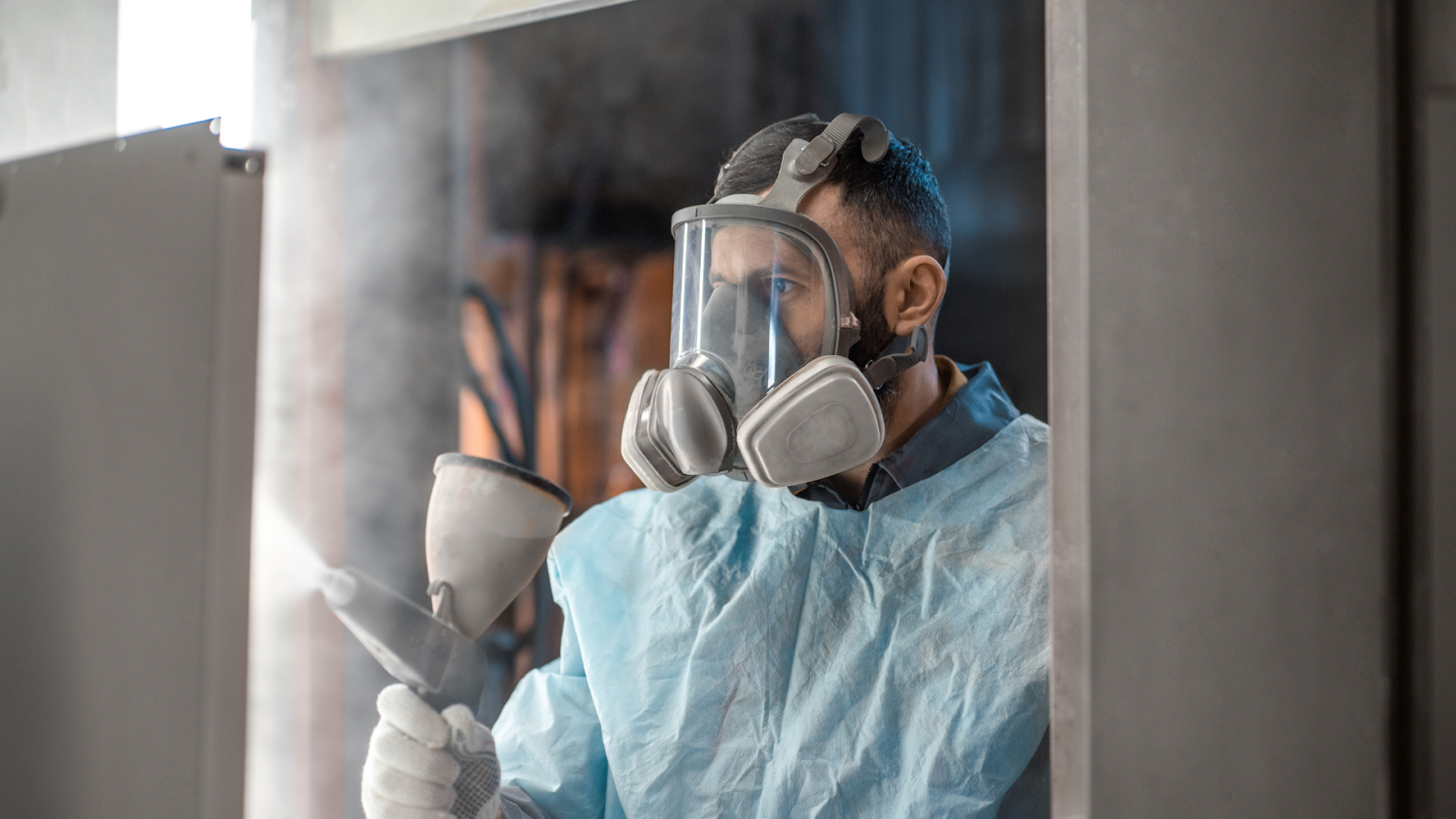
Durable Coating Performance Assurance
Integral to our Zinc Phosphate Services is the commitment to producing a robust outer coating that stands as a bulwark against time and usage. By perfecting the application process, Valence Surface Technologies ensures that the resultant coating not only serves as a staunch defender of the metal’s surface but also contributes significantly to the product’s long-term durability.
Non-Conductivity And Insulation Standard
A notable feature of the Zinc Phosphate coating is its non-conductive nature, a characteristic masterfully applied by Valence Surface Technologies. This property is crucial for components requiring additional safety against electrical interference or needing to maintain specific electrical characteristics within their operational framework.
Final Thoughts On Zinc Phosphate
As the curtain draws on our discussion of Zinc Phosphate services, it’s clear that this innovative treatment stands at the forefront of industrial resilience and functionality. Through its crystalline architecture, it dramatically amplifies the lifespan and integrity of metal components, serving as an indispensable ally against the inexorable forces of corrosion.
With Valence Surface Technologies, clients receive more than a service; they unlock the potential of a partnership that prizes innovation and quality above all else. Valence’s comprehensive approach to Zinc Phosphate coatings, backed by the largest independent aerospace product finishing service in the world, ensures that each part—over one million processed monthly—exemplifies unmatched excellence.
This commitment stretches beyond the coating itself to include full-service supply chain solutions, setting new benchmarks in quality and turnaround times, and perpetuating a legacy of leadership in metal processing and finishing for the aerospace, defense, and space/satellite markets.
Frequently Asked Questions About Zinc Phosphate
What is zinc phosphate?
Zinc phosphate is a chemical compound with the formula Zn3(PO4)2. It is a white, odorless solid that is insoluble in water. Zinc phosphate is used in a variety of applications, including metal finishing, coatings, and fertilizers.
What are the benefits of using zinc phosphate?
Zinc phosphate offers a number of benefits, including:
- Corrosion Protection: Zinc phosphate can be used to protect metals from corrosion.
- Adhesion Promotion: Zinc phosphate can be used to promote adhesion between different materials.
- Lubrication: Zinc phosphate can be used to provide lubrication.
- Fire Resistance: Zinc phosphate can be used to improve fire resistance.
What are the applications of zinc phosphate?
Zinc phosphate is used in a variety of applications, including:
- Metal Finishing: Zinc phosphate is commonly used in metal finishing to prepare metal surfaces for painting or other coatings.
- Coatings: Zinc phosphate is used in some paints and coatings to provide corrosion protection.
- Fertilizers: Zinc phosphate is used as a zinc fertilizer for plants.
- Cements: Zinc phosphate is used in some cements to improve their strength and durability.
- Dental Cements: Zinc phosphate is used in some dental cements to bond dental restorations to teeth.
How is zinc phosphate applied?
Zinc phosphate can be applied to metals using a variety of methods, including:
- Immersion: Metal parts can be immersed in a zinc phosphate solution.
- Spraying: Zinc phosphate solution can be sprayed onto metal parts.
- Electroplating: Zinc phosphate can be applied to metals using electroplating.
What are the safety precautions for handling zinc phosphate?
Zinc phosphate is a mild irritant and can cause skin and eye irritation. It is important to wear gloves, goggles, and a respirator when handling zinc phosphate. Zinc phosphate should also be stored in a cool, dry place away from heat and sources of ignition.
What are the environmental considerations for using zinc phosphate?
Zinc phosphate is a relatively environmentally friendly compound. However, it is important to dispose of zinc phosphate waste properly to avoid contaminating the environment.
What are the different types of zinc phosphate?
There are several different types of zinc phosphate, including:
- Amorphous Zinc Phosphate: This is the most common type of zinc phosphate. It is a white, odorless powder.
- Crystalline Zinc Phosphate: This type of zinc phosphate is less common than amorphous zinc phosphate. It is a colorless, transparent solid.
- Zinc Orthophosphate: This is a type of zinc phosphate that is used in fertilizers.
What are the cost considerations for using zinc phosphate?
The cost of zinc phosphate can vary depending on the type of zinc phosphate, the quantity needed, and the supplier. However, zinc phosphate is generally a relatively inexpensive compound.
Where can I buy zinc phosphate?
Zinc phosphate can be purchased from a variety of industrial chemical suppliers.
What are the future trends for zinc phosphate?
Zinc phosphate is a mature technology with a long history of use. However, there are a number of new applications for zinc phosphate being developed. For example, zinc phosphate is being investigated for use in solar cells, batteries, and drug delivery systems
Sources:
- American Chemistry Council. (2023). Zinc Phosphate. https://www.americanchemistry.com/chemistry-in-america/news-trends/press-release/2022/acc-cercla-listing-is-an-expensive-ineffective-and-unworkable-means-to-achieve-remediation
- National Institute for Occupational Safety and Health. (2023). Zinc phosphate. https://www.cdc.gov/niosh/npg/npgd0507.html
- United States Environmental Protection Agency. (2023). Zinc Phosphate. https://www.epa.gov/pfas/interim-recommendations-addressing-groundwater-contaminated-pfoa-and-pfos
- Metal Finishing. (2023). Zinc Phosphate Coating. https://npcsblog.files.wordpress.com/2017/05/electroplating-phosphating-powder-coating-and-metal-finishing.pdf
- Occupational Safety and Health Administration. (2023). Zinc phosphate. https://www.osha.gov/
- European Chemicals Agency. (2023). Zinc phosphate. https://echa.europa.eu/documents/10162/f420db83-c4a4-4810-8f1f-0ac4fbf83de9
- American Society for Testing and Materials. (2023). Standard Specification for Zinc Phosphate Coatings. ASTM B633-18.
- Chemical Engineering. (2023). Zinc Phosphate Market Analysis. https://www.chegg.com/homework-help/questions-and-answers/semester-ii-2022-23-department-chemical-materials-engineering-faculty-engineering-king-abd-q107804785
- ThomasNet. (2023). Zinc Phosphate Suppliers. https://www.thomasnet.com/products/zinc-phosphate-95843009-1.html
- International Zinc Association. (2023). Zinc Phosphate: A Versatile Material with a Bright Future. https://10times.com/international-zinc-conference-and-zinc-oxide-industry-conferences
Chemical Processing Services
Anodizing
Type I Anodize:
- Boric Anodize – Boric-Sulfuric Acid Anodize (BSAA) is an alternative to chromic acid anodize (CAA), that builds a thin-film anodic coating and provides corrosion protection and a mechanical bond. This is a chromated, environmentally friendly solution.
- Tartaric Anodize – Tartaric-Sulfuric Anodize (TSA) is an alternative to chromic acid anodize (CAA), that builds a thin-film anodic coating and provides corrosion protection and a mechanical bond. This is a chromated, environmentally friendly solution – typically specified in Airbus programs like the A350.
- Chromic Anodize – Chromic Acid Anodize (CAA) creates the thinnest anodic coating, while providing the same corrosion resistance as other types of anodization, such as boric or sulfuric.
Type II Anodize:
Type III Anodize:
Phosphoric Anodize
- Phosphoric Acid Anodize (PAA) is most commonly used in bonding applications, as it provides a superior porous surface for bonding to composites. It serves as a strong adhesive in high-humidity environments.
Chemical Film or Chem-Film
Nital Etch
- Nital etch is a solution of nitric acid and alcohol, used to etch metals. Nital etching is used to detect overtempering, improper carburization, and re-harding, as well as other manufacturing errors.
Phosphate Fluoride
- Phosphate fluoride coating is used to inhibit corrosion, improve paint adhesion and to reduce damage in metal to metal contact applications. In addition, phosphate fluoride can be used in etching solutions, namely for titanium.
Aluminum Etch
- Aluminum etch is a process by which a thin layer of the surface is removed, prior to penetrant inspection, typically in caustic or alkaline baths or solutions. This enhances the identification of surface defects, prior to further processing.
Zinc Phosphate
- Zinc Phosphate is a conversion coating for steel and aluminum, comprised of phosphate salts and phosphoric acid. This coating resists corrosion and allows for adhesion.
Valence performs all of these services to the highest degree of care, with approvals for most prime, aerospace, and military specifications. Our products and services significantly enhance safety, long-term use, and consistency in the aerospace industry. View our specs here.
Chemical Processing Tank Sizes – Aluminum
| Valence Eastman | L | Valence Wichita | L | Valence Grove | L | Valence Garden Grove | L | Valence Los Angeles | L | Valence Seattle | L | Valence Everett | L |
|---|---|---|---|---|---|---|---|---|---|---|---|---|---|
| Anodize - Boric Sulfuric | 19.5' | Anodize - Boric Sulfuric | 12' | Anodize - Boric Sulfuric | 24' | Aluminum Etch (Pickle) | 15' | Anodize - Boric Sulfuric | 27' | Anodize - Boric Sulfuric | 6' | Anodize - Boric Sulfuric | 30' |
| Anodize Phosphoric (PAA) | 8' | Anodize - Tartaric Sulfuric | 12' | Anodize - Type I Chromic | 24' | Anodize - Type II Sulfuric | 11' | Anodize - Tartaric Sulfuric | 27' | Anodize - Type II Sulfuric | 6' | Anodize - Type II Sulfuric | 12' |
| Anodize - Type I Chromic | 19.5' | Anodize - Type I Chromic | 12' | Anodize - Type II Sulfuric | 24' | Anodize - Type III Hard Coat | 11' | Anodize - Type I Chromic | 27' | Chemical Film - Type 1 (Bonderite 1200) | 6' | Anodize - Type III Hard Coat | 12' |
| Anodize - Type II Sulfuric | 19.5' | Anodize - Type II Sulfuric | 12' | Anodize - Type III Hard Coat | 24' | Chemical Film - Type 1 (Iridite 14-2) | 11' | Anodize - Type II Sulfuric | 27' | Chemical Film - Type 1 (Bonderite 600) | 6' | Chemical Film - Type 1 (Alodine 600) | 30' |
| Chemical Film - Type 1 (Chromicoat L25) | 20' | Anodize - Type III Hard Coat | 8' | Chemical Film - Type 1 (Alodine 1200S) | 24' | Chemical Film - Type 1 (Alodine 1500) | 10' | Anodize - Type III Hard Coat | 27' | ||||
| Chemical Film - Type 1 (Alodine 1132) | touch up pen | Chemical Film - Type 1 (Alodine 1600) | 12' | Chemical Film - Type 2 (Alodine 1500) | 8' | Chemical Film - Type 1 (Alodine 600) | 5.5' | Chemical Film - Type 1 (Alodine 1200S) | 27' | ||||
| Chemical Film - Type 2 (Chemeon TCPHF) | manual application | Chemical Film - Type 2 RoHS Compliant | 42' | Chemical Film - Type 1 (Alodine 1500) | 3' | ||||||||
| Chromate Treatment | 2' |
Chemical Processing Tank Sizes – Hard Metals
| Valence Eastman | L | Valence Wichita | L | Valence Grove | L | Valence Garden Grove | L | Valence Los Angeles | L | Valence Seattle | L | Valence Everett | L |
|---|---|---|---|---|---|---|---|---|---|---|---|---|---|
| Passivation Type I, II, III | 3' | Nital Etch | 4' | Inconel Etch | 3' | Passivation type ll | 6' | Passivation Type II | 6' | Passivate Type II | 6' | Passivation Type II | 12' |
| Passivation Type VI | 4' | Passivation | 4' | Passivation Type II, VI, VII, VIII | Call | Passivation type ll, Vl, Vll, Vlll | 2' | Passivation Type VI | 4' | Passivate Type VI | 6' | Passivation Type VI | 12 |
| Titanium Etch (Pickle) | 22' | Phosphate Fluoride | 10' | Phosphate Fluoride | 8' | Titanium Etch (Pickle) | 2' | Phosphate Fluoride | 10' | Phosphate Fluoride | 4' | ||
| Titanium Etch (Pickle) | 10' | Titanium Etch (Pickle) | 24' | Titanium Etch (Pickle) | 27' | Titanium Etch (Pickle) | 4' | ||||||
| Zinc Phosphate | 3' | Titanium Etch (Pickle) |
Plating News
Chrome Coating: A Necessary Investment for Aerospace Components
Chrome coating is not just a crucial investment, it's a necessity for aerospace components that are exposed to harsh conditions during flight. It offers a range of benefits, including enhanced durability, corrosion resistance, and improved performance. If you want to...
Gold Plating: The Best Way To Protect Aerospace Components From Tarnish
In the aerospace industry, the significance of gold plating cannot be overstated. This process plays a crucial role in safeguarding vital components against the detrimental effects of tarnish and corrosion. Unlike alternative plating techniques, gold plating stands...
Understanding The Different Types Of Gold Plating
Gold plating serves as a renowned metal finishing strategy that incorporates a delicate gold layer onto a metal object's surface. This gold veneer delivers an array of advantages such as augmented corrosion resistance, superior electrical conductivity, enhanced heat...
Choosing The Right Finish: Anodizing Vs. Powder Coating
Choosing the appropriate finish for a project, such as anodizing or powder coating, can present quite a challenge. Both of these finishes have distinct advantages and considerations, making it crucial to fully grasp their unique characteristics to guide your...
